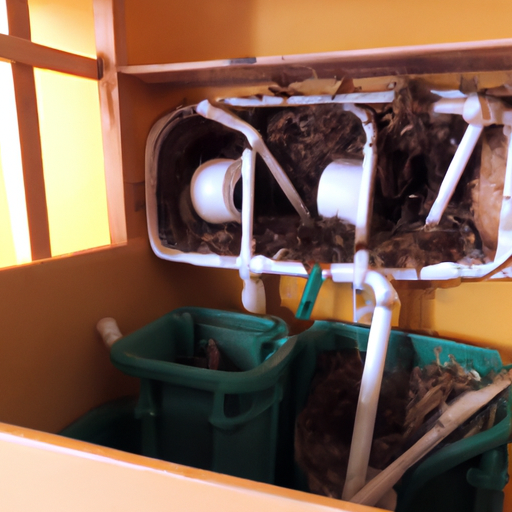Where Does the Poop Go in a Tiny House: Unraveling the Mystery
When it comes to living in a tiny house, one question that often comes up is: where does the poop go? It’s a valid concern, as traditional plumbing systems may not be feasible in such small spaces. In this article, we will explore the various options available for managing human waste in a tiny house.
Composting Toilets: A Sustainable Solution
Composting toilets have gained popularity among tiny house enthusiasts for their eco-friendly and efficient nature. These toilets use the process of decomposition to turn human waste into compost. They are designed to separate solid waste from liquid waste, allowing for odorless and hygienic composting.
Composting toilets typically consist of two chambers: one for solid waste and one for liquid waste. The solid waste chamber is equipped with a ventilation system that helps facilitate the decomposition process. Some models even have a rotating drum or agitator to aid in the breakdown of waste.
To use a composting toilet, you simply deposit your waste into the appropriate chamber and add a composting medium, such as sawdust or coconut coir. This medium helps absorb moisture and promotes decomposition. Over time, the waste breaks down into compost, which can be safely used as fertilizer for plants.
Incinerating Toilets: A High-Tech Alternative
Another option for managing waste in a tiny house is an incinerating toilet. These toilets use electricity or propane to burn waste at high temperatures, reducing it to ash. Incinerating toilets are compact and require minimal maintenance.
When using an incinerating toilet, you deposit your waste into a chamber, and with the push of a button, the waste is incinerated. The high temperatures ensure complete combustion, eliminating any odor or pathogens. The resulting ash can be safely disposed of in the trash.
Chemical Toilets: A Portable Solution
For those who prefer a more portable option, chemical toilets are a viable choice. These toilets use chemicals to break down waste and neutralize odors. They are commonly used in RVs and boats but can also be suitable for tiny houses.
Chemical toilets typically have a waste-holding tank and a separate fresh-water tank for flushing. The waste is treated with chemicals that help break it down and control odors. When the waste-holding tank is full, it can be emptied at an appropriate disposal facility.
Conclusion
Living in a tiny house doesn’t mean sacrificing basic necessities like a functioning toilet. Composting toilets, incinerating toilets, and chemical toilets offer practical solutions for managing human waste in small spaces. Each option has its own advantages, so it’s important to consider factors such as sustainability, convenience, and personal preferences when choosing the right toilet for your tiny house. So, rest assured, the mystery of where the poop goes in a tiny house has been unraveled, and you can enjoy a comfortable and sustainable lifestyle in your compact abode.




